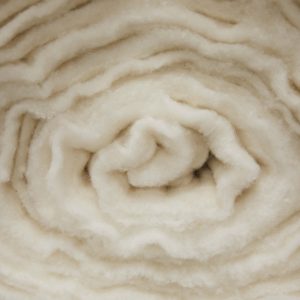An introduction to Merino wool
Merino wool is a natural fibre made from the wool of Merino sheep. This unique breed originated in Spain and was introduced to New Zealand in the early 1800s. Merino sheep are well-suited to the New Zealand high country due to their ability to thrive in extreme climates. This makes their wool an excellent material choice for clothing and bedding due to its natural temperature regulation and breathability.
What makes Merino wool unique?
Merino wool is a natural, lightweight fibre known for its softness, temperature regulation, breathability, and moisture wicking. Its natural wool benefits include odour resistance and the anti-bacterial properties of lanolin, which prevents the build-up of odour-causing bacteria.
Is merino wool soft?
Merino wool is exceptionally soft due to its high fibre density, with fibres that grow in longer, thinner layers than traditional wool.
What is merino wool good for?
Merino wool is excellent for bedding and clothing due to its luxurious softness, odour resistance, longevity, and easy maintenance.
Why is Merino wool ideal for luxury bedding?
Luxury wool bedding has thermophysiological benefits including superior moisture control and temperature regulation, as well as antimicrobial properties that make it uniquely suited for a fresh, dry sleeping experience. It excels in terms of breathability, making it ideal for a range of ambient temperatures, sleep preferences, and seasons.
The origin of Merino wool
Highly prized Merino wool originated in Spain and found favour under Moorish rule in the Middle Ages. This breed was introduced to Australia and New Zealand in the 1800s. By the 1850s, New Zealand Merino wool had become one of our main agricultural industries.
Sourcing Merino wool from New Zealand’s South Island
Dreamwool’s Merino wool is sourced directly from select high-country farms. We have four central South Island growers who produce Merino for us in Tekapo, Hakataramea and Kurow.
The process of making Merino wool
Merino wool production begins with annual sheep shearing, where wool is carefully removed from the sheep, examined, and quality checked. It is then sorted and cleaned before the fibres are separated in a process called carding. From there it is needled into a batt form with graduated density for greater comfort and finished into final Merino products.
Sustainable practices in Merino wool production
Sustainable wool products offer a range of benefits for our local environment including renewability and biodegradability. Merino sheep are bred on land not suitable for agriculture and can be sheared for many seasons, making them a sustainable and renewable resource. Products made from Merino are durable and long-lasting, meaning that they will not need to be replaced often. Merino wool is also bio-degradable at the end of its lifecycle, unlike synthetic fibres which can contain toxins and microplastics.
Key characteristics of Merino wool fibers
Merino wool is supremely soft and luxurious due to its high fibre density, which also makes it especially strong and durable. Merino wool fibres are moisture- and odour-resistant, temperature-regulating, naturally elastic, and highly breathable.
Fine and soft texture
Merino wool has a naturally crimped texture and a very fine fibre diameter, yielding a high fibre density. This results in a soft and elastic texture ideal for clothing and bedding applications.
Natural temperature regulation and breathability
Due to the harsh climates experienced by Merino sheep, their wool naturally regulates temperature, moving the dial in comfort and delivering unparalleled microclimate control. These sheep have evolved to produce wool that keeps them warm during icy winters and cool during scorching summers.
Durability and resilience in luxury mattresses
Manufacturing quality is the number one factor that affects mattress durability and resilience. This includes the quality and quantity of all of the bed’s components, including its natural materials, latex, and spring system. Merino wool is naturally stain-resistant and long-lasting, making it an excellent choice for durability and resilience.
Why Merino wool is perfect for Dreamwool mattresses
Merino wool provides luxurious comfort with unparalleled microclimate control for a truly restful night’s sleep. By using thick, plush layers of Merino, Dreamwool mattresses effortlessly maintain your ideal sleep temperature and draw humidity away quickly, ensuring a dry, breathable bed environment throughout the night. It is also naturally hypoallergenic, antimicrobial and breathable, making it a healthier luxury option compared to synthetic alternatives. The outcome is a mattress that enhances the natural attributes of its materials, offering optimum comfort and well-being.
Caring for Merino wool latex mattresses
Rotating your mattress quarterly will help it maintain its shape and provide you with comfort and support for longer. The best way to clean a Merino wool latex mattress is to avoid using too much liquid and treat it like you would any other natural fibre. Dreamwool mattresses also feature a zip-off woollen overlay that can be hung in direct sunlight to eradicate dust mites.


